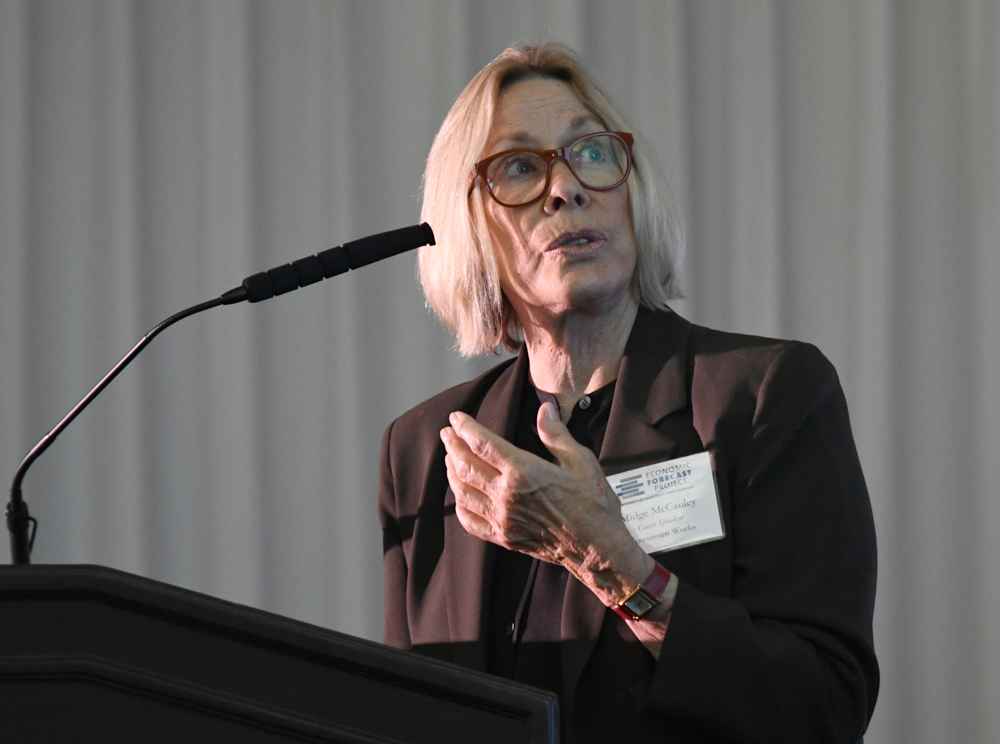Untangling Downtown Santa Barbara Dysfunction
Should Property Owners Do More to Save State Street?

Last Wednesday’s economic conference on the State Street vacancy crisis kicked off with a confession: Much of the information that would be presented, retail expert and keynote speaker Midge McCauley said, was nearly two years old. But because so many of the same problems remain, and because most of the commissioned advice McCauley had already offered to city leaders went nowhere, she’d give it again.
McCauley repeated general suggestions on how to enliven the city’s commercial corridor — cater to locals, intermingle businesses, focus on experiential shopping, and so on — and she had specific ideas, too. City Hall, she said, ought to hire a staff “retail advocate” to recruit merchants and hand deliver them to brokers; it should ease design restrictions so retailers can properly brand themselves with “bold and beautiful” signage; and, perhaps most important, Downtown Santa Barbara — the nonprofit membership organization that maintains and promotes State Street — would be wise to reexamine its funding model, a seemingly esoteric detail among a galaxy of problems but in reality a potential game-changer with broad financial implications.
Since the 1970s, Downtown Santa Barbara has utilized what’s called a business-license-based business improvement district (BID) to collect approximately $280,000 a year in fees from 1,400 merchants to pay for operations, such as street cleaning and special events.
Another approach, called a property-based business improvement district (PBID), which taxes property owners instead of their tenants, would generate far more revenue and make building owners a bigger part of the solution. PBIDs are common around the country; there are more than 150 in California alone, and they allow downtown organizations to operate more nimbly and autonomously, with less dependence on local governments for funding and permissions, among other advantages, advocates say.
In 2017, Downtown Santa Barbara started down the path of potentially making the PBID switch, but the process was derailed during the highly fraught tenure of former director Maggie Campbell, who abruptly resigned in January after strained relations with city officials culminated in explosive encounters with councilmembers. Interim director Dave Lombardi said the PBID idea is on the back burner until a new leader is hired.
Once that happens, more outreach will take place to stoke the interest of property owners, which may prove an uphill climb, though some have already expressed their support. “This is solely on them wanting to do this,” Lombardi explained. Visit Santa Barbara, the region’s tourism promotion group, made a comparable tax-base transition some years ago. Most of Downtown Santa Barbara’s directors would like to adopt a PBID system, Lombardi said, including himself, but a small minority is stymieing the effort.
Lombardi declined to name names. Other sources within the organization described the holdouts as a handful of anti-tax crusaders responsible for much of the dysfunction that has choked Downtown Santa Barbara progress for years. “The majority of the board will agree on the right course, and a vocal minority will derail the discussion,” one boardmember complained. Lombardi, who previously served as the organization’s board president, has also been criticized as an ineffective administrator. (Full disclosure: Sarah Sinclair, the Santa Barbara Independent’s advertising director, is a member of the Downtown Santa Barbara board. She was not involved in the writing of this story.)
This “festering internal dynamic,” as it was described, may help explain the relative ineffectiveness of Downtown Santa Barbara in combating State Street’s decline and in comparison to its highly engaged and forward-thinking counterparts in other communities. Downtown S.L.O., for instance, offers a lot more services to San Luis Obispo with a lot less funding, in the next few weeks alone hosting a concert series, the Sip ’n Saunter wine-tasting event, and a Halloween-themed Farmers’ Market. Santa Barbara’s lineup, with its heavy focus on 1st Thursdays and the Holiday Parade, hasn’t changed in years, critics note. With respect to programming and a PBID, it’s time for Santa Barbara to get with the program, a boardmember said. “We’re already way behind the curve.”



